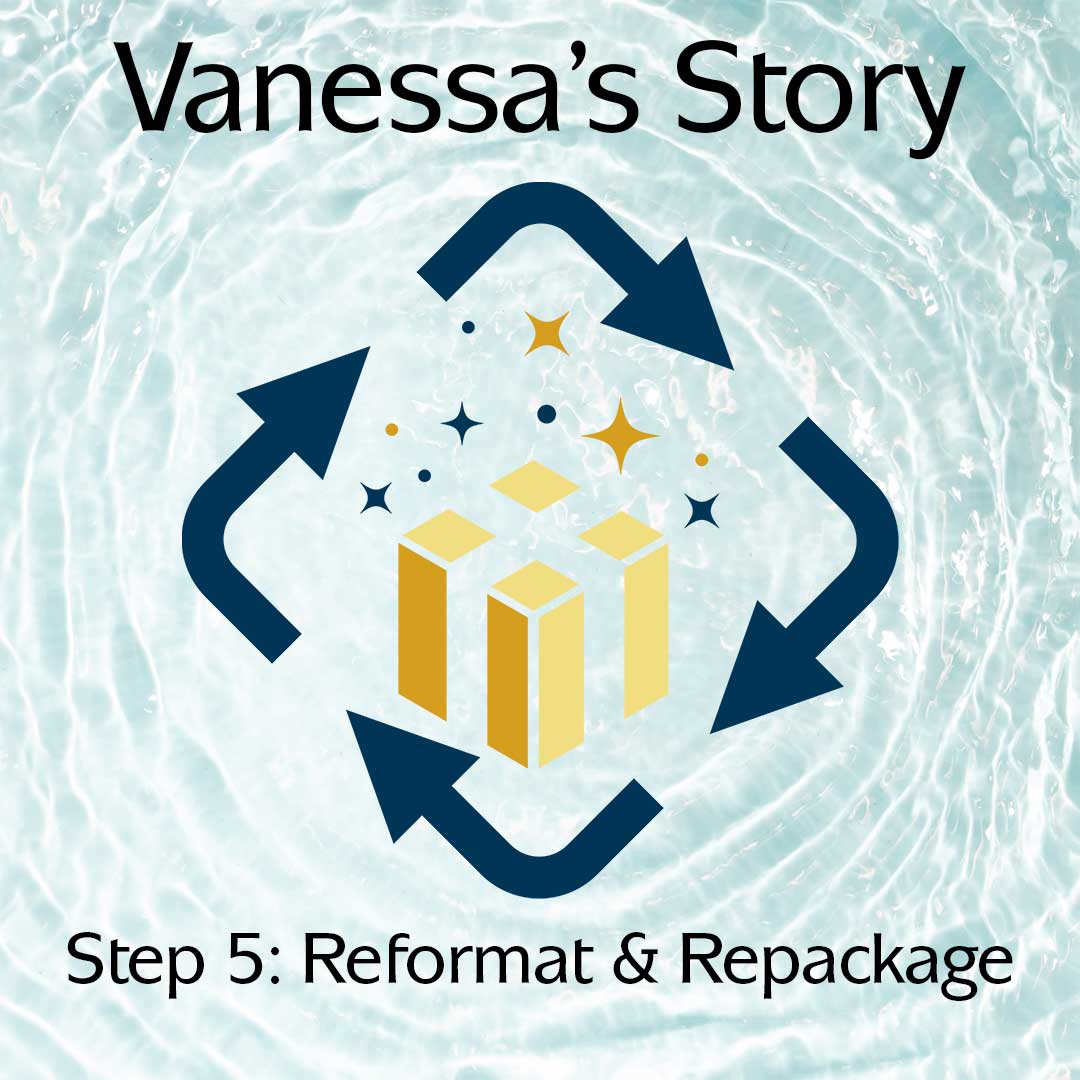The Branded for Success book was written in 2007 by my wife and 2 of our colleagues. It’s purpose was to highlight my wife’s graphic design talent that could be leveraged for a business to get a successful brand. It has allowed the three authors to gain authority as branding experts since they are published authors on the subject.
Understanding of branding has grown and evolved over the last 18 years. The principles in this book are still applicable but some updating is necessary. This chapter answers the question of the importance of using your brand. Using our content transformation services, we will evaluate it to see that it is not outdated and irrelevant. This is our opportunity to update and supplement with necessary content that may have been missed when it was originally offered.
Since the book was written from a design perspective, this topic is important and should be determined after the foundational brand elements are completed first. New content will be added as necessary before we prepared for it’s new delivery. Since the repurposed content will be used for premium access content, I will provide summaries of the original text and the repurposed text. Also, when we are finished, the chapter divisions may not be the same, since this will not be repurposed into another printed book.
Summary of chapter 7 of the original text:
Using your logo and branding consistently is essential for building recognition and trust with your audience. When your brand appears on everything you produce, it reinforces your presence and helps people remember you. Repeated exposure to your visual identity increases the chances that customers will come back to you for more. It builds familiarity and loyalty over time. This consistency also plays a vital role in helping your audience form a relationship with your brand. When people see your brand regularly, they begin to know you, like you, and eventually trust you. This paves the way for repeat business and word-of-mouth referrals.
Strong branding not only sets you apart from the competition but also positions you as an expert in your field. Case studies like Alex Mandossian’s Access to Leaders series and Dr. Phil’s transformation into a trusted media personality show how powerful branding can elevate your status, associate you with other respected names, and build credibility. Whether you’re in marketing, design, sports coaching, or customer care, branding yourself with intention and consistency is what turns a name into a trusted authority. From logos and colors to fonts and photos, every element should align to create a unified brand identity that resonates with your target audience and keeps your business top of mind.
Summary of the corresponding repurposed text:
Branding is more than just having a nice logo. It’s a powerful strategy that influences how your business is perceived and remembered. In today’s crowded market, consistent branding is essential to stand out and stay top of mind. From your visuals to your messaging, everything your business puts out should reflect a unified identity. This consistency builds recognition, helping customers quickly identify and recall your brand across all platforms. Think of major brands like Apple or Nike. Just their logos are enough to trigger a sense of familiarity and trust. That kind of brand strength doesn’t happen by accident. It’s the result of strategic, ongoing effort to present a cohesive brand experience.
A strong brand also builds credibility and trust, which are key to creating loyal customers and brand advocates. When your audience sees professionalism and consistency in your branding, they’re more likely to feel confident in your products or services. Beyond visuals, branding shapes the emotional relationship you have with your audience. It guides people through the journey of knowing, liking, and trusting your business. Whether you’re leveraging brand associations, developing a signature style for your product line, or tailoring your tone for different platforms, every element plays a role in strengthening your brand. Ultimately, branding elevates perceived value, positions you as an authority, and helps you carve out your unique place in the market.
Observations:
The content in the original book was still applicable and relevant. It needed a shift from a design centric point of view to a more brand complete perspective. The original book’s purpose was to focus on the design aspect of branding in order to convert leads into clients for the graphic design business. Now that we are repurposing the material, a shift is being made to come from a brand-whole foundation.
Final Thoughts:
This is one of the situations where the principles and concepts from the content were still viable. The repurposed version improved when the perspective was adjusted. You will find that this is common when repurposing information that is more than 5 years old. If you were the creator of the original content, it will be better to have a separate set of eyes review. It is more difficult to remove yourself from what you originally created. The other person will give a more objective look and evaluate better what needs to be updated.


